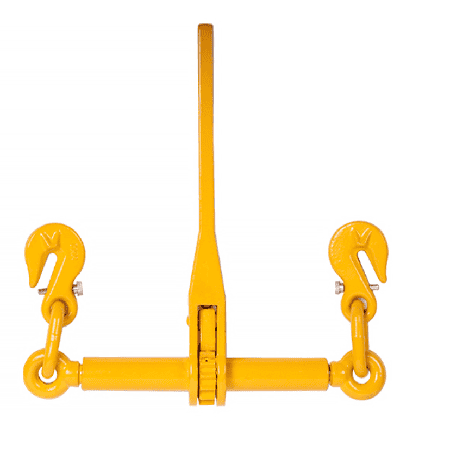Differences and Applications of DIN766 and DIN763 Chains
Chains play a crucial role in various industries, including construction, logistics, and marine applications. Among the commonly used chain standards, DIN766 and DIN763 stand out. While they share some similarities, their structure, usage, and mechanical properties vary significantly.
Similarities Between DIN766 and DIN763
Despite their differences, DIN766 and DIN763 chains have several common features:
- Material Composition
- Both are typically made from carbon steel or stainless steel, with common grades including Q235, 304, and 316.
- They are available with various surface treatments, such as electro-galvanizing, hot-dip galvanizing, and stainless steel polishing, to enhance corrosion resistance.
- Overlapping Applications
- Both chains can be used for towing, securing, fencing, marine, and industrial applications, although DIN766 is more suited for heavy-duty tasks.
- Similar Appearance
- Both consist of a series of interlocking links and come in standard diameter sizes
Key Differences Between DIN766 and DIN763
| Features | DIN766 | DIN763 |
| Link shape | Short Link | Long Link |
| Applications | Transmission, marine | Towing, securing, fencing, decorative use |
| Strength | Higher | Lower |
Parameters

DIN763 CHAIN
| d(mm) | t(mm) | b(mm) | weight(kg/m) |
| 2 | 22 | 8 | 0.06 |
| 2.5 | 24 | 10 | 0.1 |
| 3 | 26 | 12 | 0.15 |
| 3.5 | 28 | 14 | 0.2 |
| 4 | 32 | 16 | 0.27 |
| 4.5 | 34 | 18 | 0.35 |
| 5 | 35 | 20 | 0.43 |
| 5.5 | 39 | 22 | 0.52 |
| 6 | 42 | 24 | 0.63 |
| 7 | 49 | 28 | 0.86 |
| 8 | 52 | 32 | 1.1 |
| 8.5 | 56 | 34 | 1.25 |
| 9 | 59 | 36 | 1.41 |
| 10 | 65 | 40 | 1.75 |
| 11 | 72 | 44 | 2.11 |
| 12 | 78 | 48 | 2.55 |
| 13 | 82 | 52 | 2.95 |
| 16 | 100 | 64 | 4.45 |
| 18 | 113 | 70 | 5.65 |
| 19 | 119 | 72 | 6.25 |
| 20 | 120 | 75 | 7 |
| 22 | 127 | 82 | 8.55 |
| 25 | 140 | 85 | 10.9 |
| 28 | 152 | 96 | 13.9 |
| 32 | 171 | 108 | 18.2 |

DIN76 CHAIN
| d(mm) | t(mm) | b1(mm) | b2(mm) | weight(kg/m) |
| 4 | 16 | 4.8 | 13.6 | 0.32 |
| 5 | 18.5 | 6 | 17 | 0.5 |
| 6 | 18.5 | 7.2 | 20.4 | 0.8 |
| 7 | 22 | 8.4 | 23.8 | 1.1 |
| 8 | 24 | 9.6 | 27.2 | 1.4 |
| 9 | 27 | 10.8 | 30.6 | 1.8 |
| 10 | 28 | 12 | 36 | 2.3 |
| 11 | 31 | 13.2 | 40 | 2.7 |
| 13 | 36 | 15.6 | 47 | 3.9 |
| 14 | 41 | 16.8 | 50 | 4.4 |
| 16 | 45 | 19.2 | 58 | 5.8 |
| 18 | 50 | 21.6 | 65 | 7.4 |
| 20 | 56 | 24 | 72 | 9 |
| 23 | 64 | 27.6 | 83 | 12 |
| 26 | 73 | 31.2 | 94 | 15 |
| 28 | 78 | 33.6 | 101 | 18 |
| 30 | 84 | 36 | 108 | 20 |
| 32 | 90 | 38.4 | 115 | 23 |
| 36 | 101 | 43.2 | 130 | 29 |
| 40 | 112 | 48 | 144 | 35 |
| 42 | 118 | 50 | 151 | 40 |
Summary
DIN766 = Short-link chain + Calibrated + High strength + Suitable for transmission/marine use
DIN763 = Long-link chain + Non-calibrated + More flexible + Suitable for securing/fencing
This guide should help you understand the key differences between DIN766 and DIN763 chains, ensuring you make the best choice for your application!


